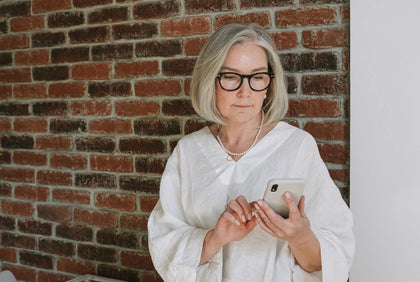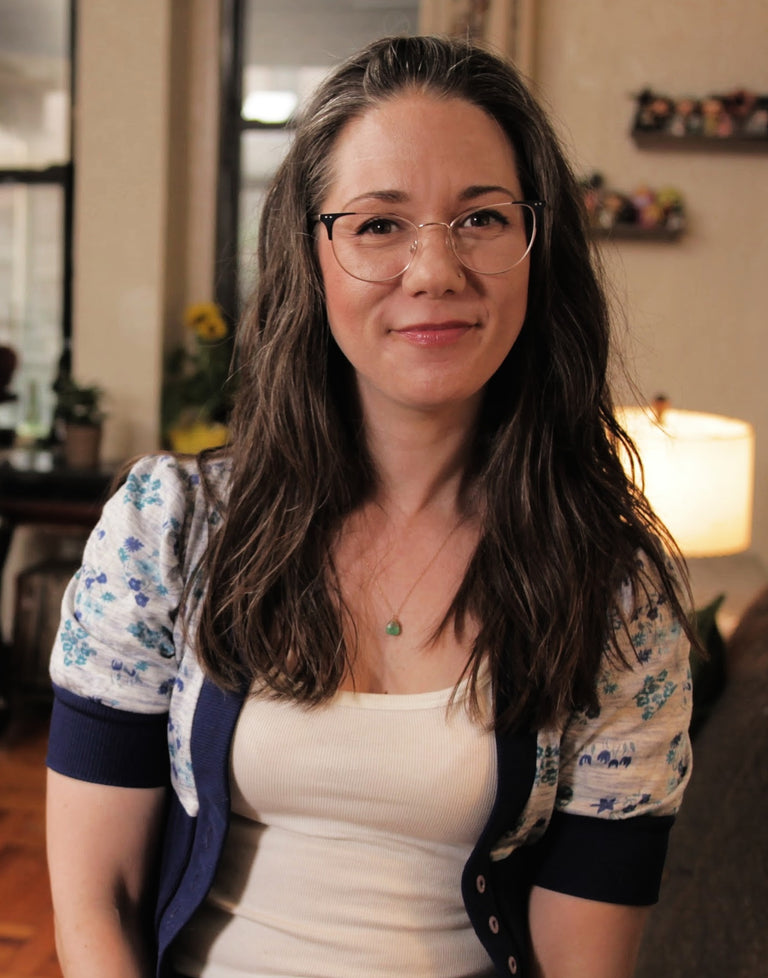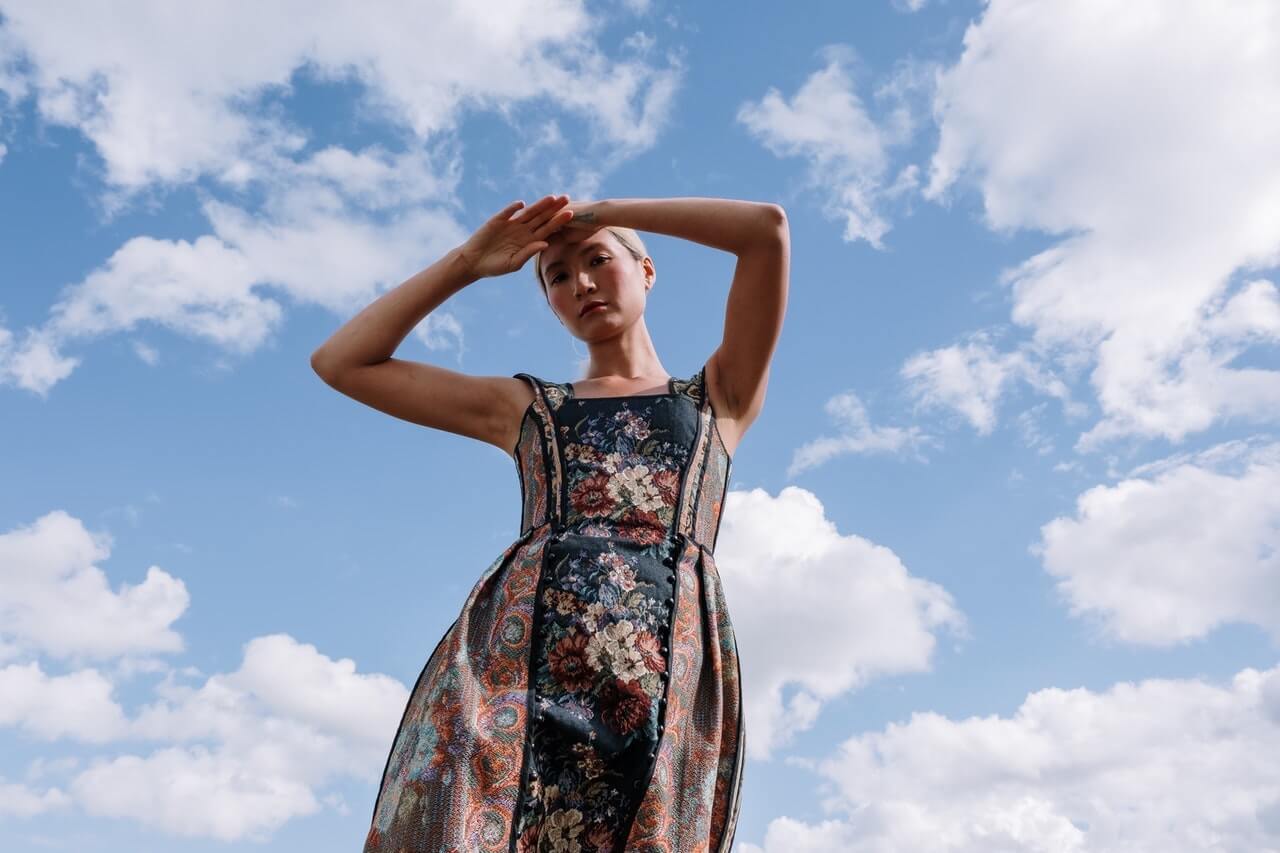Love ‘em or hate ‘em — gray hairs are a part of life. And discovering that first gray hair can be a downer. Losing the color in your hair can begin happening at a young age or when you're middle-aged, and it doesn't matter what hair type or hair color you have. But where does hair start graying first?
Some people report they notice that they begin to go gray at the temples, but is there any data to back that up? Read on to uncover the possible connection between graying and your temples, along with what products you should use to combat gray hair and preserve your natural hair color.
What Makes Hair Gray in the First Place?
As much as some people might like to, there’s no escaping gray hair. It’s estimated that 74% of people aged 45 to 65 have at least some gray in their manes.
To understand why hair may gray at the temples first, it’s helpful to understand why hair turns gray to begin with. Since the presence and likelihood of graying hair increases with age, it shouldn’t come as a surprise that the main reason for gray and white hair is the aging of our hair follicles, which are the structures that live within our skin and produce hair shafts.
Over time, as hair follicles age, their pigment-producing cells stop producing the melanins (pigments) needed to give hair color. Additionally, over time an accumulation of hydrogen peroxide (a bleaching agent) will contribute to graying, too. “This actually leads to the hair bleaching itself from the inside out,” explained Rebekkah O'Neill, master stylist and founder of The Orchard Hair.
Add to this other general wear and tear caused by environmental factors like pollution, smoke and UV exposure and voila! Gray hair.
Who Might See Gray at the Temples First?
So what’s the connection between gray hair and your temples? Do we know for sure that’s where hair grays first?
“This is a fascinating topic that is poorly studied,” said Dr. Erum Ilyas, board-certified dermatologist and founder of AmberNoon.
In other words, most of the evidence for temples being the first spot to gray is anecdotal: Lots of people can attest to their experience, but formal scientific studies to back it up are lacking.
Although most evidence is anecdotal, one study, which included 522 men and 480 women, aged 12 to 91, used a questionnaire to ask participants if they had gray hair and when they first noticed the graying.
The results showed that about 61% of men claimed they first noticed graying at the temples, versus only 31% of women. Women were more likely to see first grays at the frontal region of the scalp, the area directly above your forehead, with about 39% of women reporting this was where they first saw gray.
Why Hair Might Gray At The Temples First
“As a hairstylist, I believe that’s the place you notice gray first because it’s the first hair you see when you look in the mirror,” said Jonesia Melton-Hegwood, board-certified trichologist and owner of Salon J’Lynae.
Dr. Ilyas offered a few commonly held speculations as to why we might gray at the temples first. “Some say that because the hair is thinner around your temple area, it receives the most wear and tear,” she said. “This area always receives the most stress from little habits you may have, like resting your hand on your head a lot or wearing your hair in a tight hairstyle." These speculations make common sense, based on what we know on how repeated physical stress and stress, in general, can impact hair.
But until more research is done, these are just speculations. “For now, the mystery of why your hair goes gray at the temple first remains unsolved,” said Dr. Ilyas.
How to Use Hair Care to Keep Gray Away
While the jury is out on whether you can expect your first gray hairs at the temples, there are some healthy and science-backed ways to hang on to your natural color for longer — and even reverse graying! If embracing gray hair isn't in your plans, read on.
Up Your Hair Care Routine
Meet our GRO AGELESS Anti-Gray Hair Serum, which is built upon two patent-pending plant-based actives that have been clinically proven to reduce the appearance of gray on new hair growth and dramatically restore color and shine to graying hair. With consistent use, studies showed that natural hair color was boosted up to 34% in 79% of gray hairs.
There are other ways you can adjust your hair care routine with an eye toward slowing hair aging. “In order to slow down hair aging, consider trying a few different things,” said Rebekka O’Neill. “Try not to touch your hair as often, and stop wearing it in tight hairstyles,” she suggested. The same goes for heat styling — try to minimize it.
Another tip Rebekka offered: a scalp massager. “These promote blood flow to the scalp, which aids in hair growth, and also gets rid of buildup that could be stunting hair growth,” she said.
Our GRO Revitalizing Scalp Massager will do the trick!
Think About Diet
You can also use your diet as a way to support optimal hair health and encourage your natural hair color to stick around. In fact, certain nutritional deficiencies might contribute to graying.
“In some cases, gray hair may be caused by a deficiency of B12,” shared Mary Ramirez, a board-certified dermatologist with Westlake Dermatology.
That’s why the new GRO AGELESS Gray Delay™ Hair Supplement includes not just B-12 but a suite of B-vitamins known to support hair shaft and follicular health. Just two capsules daily will help preserve hair's pigment, add collagen-rich shine and reduce shedding.
Decrease Stress Levels
“Stress can be a reversible factor in graying hair,” said Dr. Anthony Kaveh, medical doctor and public speaker.
In fact, decreasing stress has many benefits — not just for your follicles but for your whole body and your mental well-being. This is especially true now; our collective levels of stress have never been higher, and we all need to be extra gentle with ourselves and each other.
Some great natural ways to decrease cortisol levels in the body include spending time in the sunshine, having good sleep habits and practicing mindful breathing.
Say Yes to Destress: 9 Natural Ways to Lower Cortisol
#include-related-slider#
The Takeaway
While we don’t have much evidence to support that hair graying starts at the temple, some preliminary data suggests that it might be more common in men. Regardless of where your gray hair begins, there are steps you can take to both naturally repigment the grays you have and slow the onset of new grays. If you think you’ve noticed premature gray hair and you’re under the age of 20, talk to a doctor to explore the root cause, as sometimes premature graying can be caused by vitamin deficiencies, certain medical conditions or other health problems.
More From VEGAMOUR
- Shop: GRO AGELESS Collection for Graying Hair
- How to Transition to Gray Hair With Highlights
- How Celebrities Use VEGAMOUR
- Why Does Hair Turn Gray?
Photo credit: Ivan Samkov/Pexels
Back




















